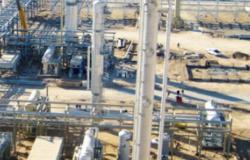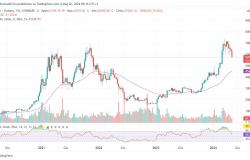Here are the numbers of the ‘almost’ economic superpower which in one year went from ninth to fifth place among the world economies
According to previous predictions, Narendra Modi is on his way to conquering a third five-year term as prime minister in legislative elections which will be held starting tomorrow in India. Under his leadership, the country could aspire to become an economic superpower, present itself as a real alternative to China for investors, at a difficult time for relations between Beijing and the West. India has good relations with most major economies and is aggressively courting large companies to set up factories in the country.
The country’s economy
It is one of the fastest growing economies in the world. GDP per capita rose by 55% between 2014 – the year Modi became prime minister – and 2023. The country went from ninth to fifth place among the world’s economies in the same period of time. The country’s sustained expansion will push India higher into the ranks of the world’s largest economies, rising to third place behind the United States and China by 2027, some observers say.
However, Indian authorities could do much more to increase gross domestic product per capita, an indicator of living standards by which the country ranked 147th in 2022, according to the World Bank. Guido Cozzi, professor of macroeconomics at the University of St. Gallen in Switzerland, tells CNN that with economic growth there will be “cascade effects on GDP per capita”. But this does not guarantee “a reduction in income inequality and policies that promote inclusive growth may be necessary”. Just like China more than three decades ago, India is now beginning a massive transformation of its infrastructure, investing billions to finance the construction of roads, ports, airports and railways. Meanwhile, private investors are building the world’s largest green energy plant.
According to a report last month by the International Labor Organization, educated Indians between the ages of 15 and 29 are more likely to be unemployed than those without any education.” Youth unemployment rates in India are now higher than global levels. The unemployment rate for young Indians with a college degree was more than 29%, nearly nine times higher than for those who cannot read or write. “The Indian economy has not been able to create enough jobs remunerative jobs in non-agricultural sectors for new young people joining the educated workforce, which is reflected in the high and growing unemployment rate,” he added.
The results are immediately visible, as confirmed by the numerous construction sites opened throughout the country. India added nearly 55,000 kilometers to its national highway network, a 60% increase in its overall length, between 2014 and 2023. In recent years, the country has also created a number of technology platforms, digital public infrastructure, who have transformed lives and businesses. These include the Aadhaar identification program, which has been collecting citizens’ demographic and biometric data since 2009, considered the largest biometric database in the world and which has also helped the government save millions by reducing corruption in welfare initiatives. Another platform, the Unified Payments Interface (UPI), allows users to make payments by scanning a QR code. It has been embraced by Indians from all walks of life. In September 2023, citing a World Bank report, Modi said that thanks to its digital public infrastructure “India has achieved financial inclusion goals in just six years, which otherwise would have taken at least 47 long years”.
The stock market
The enthusiasm for India’s growth potential is reflected in his stock market, which reached record levels. The value of companies listed on Indian stock exchanges surpassed $4 trillion at the end of last year. India has two major stock exchanges: the National Stock Exchange of India (NSE) and the BSE, Asia’s oldest stock exchange formerly known as the Bombay Stock Exchange. New Delhi is ultimately riding a quest for supply chain diversification that pushes international companies to conduct their operations away from China, where they have faced hurdles during the pandemic and are threatened by rising tensions between Beijing and Washington. Asia’s third-largest economy has launched an incentive program worth $26 billion to attract companies to produce in 14 sectors, ranging from electronics and automobiles to pharmaceuticals and medical devices.
As a result, some of the world’s largest companies, including Apple (AAPL) supplier Foxconn, are significantly expanding their operations in India. Billionaire Elon Musk said last week on X that he “can’t wait” to meet Modi in India, without giving a date. The head of Tesla (TSLA) is expected to announce a major investment in India soon, with the automaker reportedly scouring the country for a suitable location for its first Asian factory outside China. However, India’s economy, much like its democracy, is far from perfect. If re-elected, Modi will face the enormous challenge of creating hundreds of millions of jobs for a population that remains largely poor. With a median age of 29, India has one of the youngest populations in the world, but is not yet able to reap the potential economic benefits from its large young population.
The use of artificial intelligence
Me tooArtificial intelligence debuts among the tools used in the Indian election campaign, which open today. A personalized message from Prime Minister Narendra Modi, addressed to individual voters, called by name, but also voices cloned from the original of politicians in phone calls that reach citizens directly, managed by chatbots like ChatGpt. These are some of the tools with which artificial intelligence makes its debut among the tools used in the campaign for the Indian elections which open tomorrow.
The New York Times reports images from Modi’s ‘personalised’ videos, generated by artificial intelligence and shared on WhatsApp, in which the prime minister appears to address individual voters directly. The newspaper then verified the possibility of replicating this message, discovering that a single laboratory can create – using a “cloning algorithm” that studies the audio, cadence and intonations of the chosen politician’s voice – up to 10,000 videos a day . Furthermore, it is explained, generative AI can also remove language barriers, which is particularly useful in a linguistically diverse country.
Former Italian ambassador to New Delhi: “India great democracy? Question mark with Modi”
India remains a great country, but it is not certain that it will remain a great democracy. On the day of the first round of elections in the Asian giant – where from tomorrow to June 1st just under a billion voters will vote in 28 federal states and eight territories – the former Italian ambassador to New Delhi, Antonio Armellini, speaks to Adnkronos about Narendra Modi’s Indiawho is entering his third mandate, after ten years in government.
With the leader of the BJP “India has changed a lot, it has grown economically, it has improved internally, the infrastructure investment program has brought results and the financial system has been modernised”, recognizes Armellini. Which among the ‘merits’ cites “the hold on the electorate, which has expanded and is no longer just the traditional one of the BJP”, the party of traders and entrepreneurs.
At the same time, observes the former ambassador, “the authoritarian grip of the Modi government has become increasingly oppressive, the result of a very sophisticated control and consensus mechanism”, while the divided and fragmented opposition “is having difficulty in transmitting some type of message that can be understood by voters”.
India is growing “but inequalities are also growing”, Armellini further underlines, as it sets out to become “an authoritarian democracy increasingly distant from the model that had made it unique on the Asian continent, a great liberal democracy, daughter of the political thought of the 19th century, which had also had Giuseppe Mazzini among its inspirers of the struggle for independence”. “Secular, tolerant, multi-ethnic India, respectful of the rule of law, is not Modi’s India, which has a strong identity – reasons the former ambassador -. India is a great country, but it is a point that it remains a great democracy question”.
As for New Delhi’s foreign policy, which “perceives itself as a great power on the same level as the United States and China, the starting point is that India does not have alliances, but relationships, it is a partner of many, but in one’s own interest.” Which is that of “great power autonomy with two essential points of reference: the conflict with China and the conflict with Pakistan”, explains Armellini. And anyone who, “as the United States sometimes tries to do, thinks they can tie it together in a real alliance, risks being severely disappointed”. Finally, the former ambassador says he is convinced that New Delhi has “a greater capacity to attract to become the point of reference for the global South”, in particular compared to Beijing, which “requires other countries to take sides”, whereas the India has a less identity-based approach.
Tags: Israel attacks Iran raid Khameneis birthday Peek News Magazine






